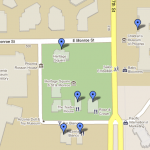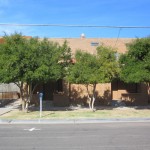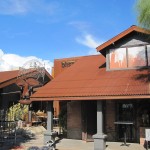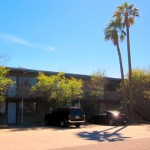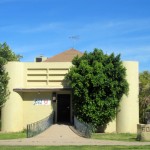From the Arizona Room is a weekly column examining the historic, reuse and infill structures in Downtown Phoenix. The inspiration for this column stems from the ever-expanding resources in Burton Barr Central Library’s Arizona Room (located on the second floor). For further information on this and other historic structures in the area, visit the Arizona Room during normal library hours.
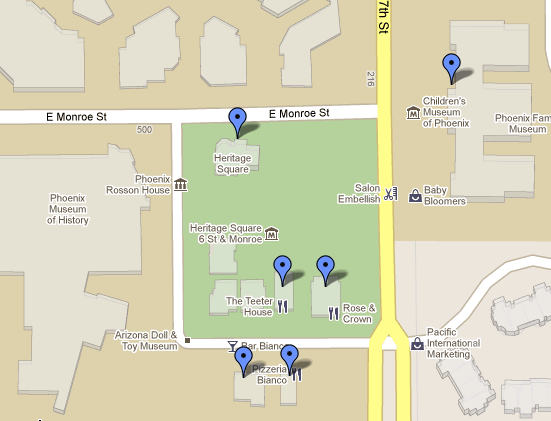
A Google map created by Jim McPherson offers easy clickability through the entire blog series.
When “From the Arizona Room” began its weekly postings in early 2010, I couldn’t have imagined it would span a year-plus and 60 posts. In fact, I was so wrapped up in finding credible, authentic and interesting information in the Arizona Room that I completely missed several notable milestones: the one-year anniversary post, the 25th post, the 50th post and so on.
It’s interesting, going into the Arizona Room. You can’t help but get sucked back in time, lost in the lingo of historic architectural studies and early neighborhood surveys. You learn of the generations that made their mark on Phoenix back then, just as so many in our generation are doing today.
Around the 50th-post mark, DPJ wiki co-creator Jim McPherson took the time — unsolicited, as is usually the case — to map out each post in a Google map. For map geeks like us, it’s eye candy, sure, but it also presents the entire blog archive right in front of the casual reader, marking the places that would otherwise blend into the map or whirl by on the side of the road.
The map presents a lot of findings over the lifespan of this blog series, including:
- A look at many of Heritage Square’s wonderfully preserved historic buildings;
- the Garfield patch between Roosevelt and Van Buren streets and 9th and 10th streets offered a glimpse of the streetcar lifestyle once prevalent in that neighborhood;
- several chunks of Evans Churchill still include beautiful, early century architecture;
- a commercial strip of 1st Street between Roosevelt and McKinley streets showed great architectural diversity through the first half of the 1900s;
- the south end of the Roosevelt neighborhood has some terrific historical finds;
- the central core of the city, between Van Buren Street, Jefferson Street, Central Avenue and 7th Avenue, includes perhaps the widest scope of architectural styles in the entire city (also some of the most ornate structures around);
- the neighborhoods around Lower Grand Avenue west to I-17 are sprinkled with hidden gems — some of the most stately single-family architecture in the city; and,
- the Alvarado neighborhood, the furthest northeast that the blog’s coverage traveled, is the best neighborhood for unique mansions on tree-lined streets in Central Phoenix.
Though this blog series is ending, the pursuit of interesting, well-maintained architecture in Phoenix is only continuing to spark interest. I urge you to consult this map when exploring neighborhoods or architectural styles in the central corridor. These 60 posts should give insight into Phoenix’s storied past. Let’s keep spreading these stories to our neighbors.
A special thank you goes out to Jim McPherson for creating (and helping to maintain!) this map!
View From the Arizona Room in a larger map


